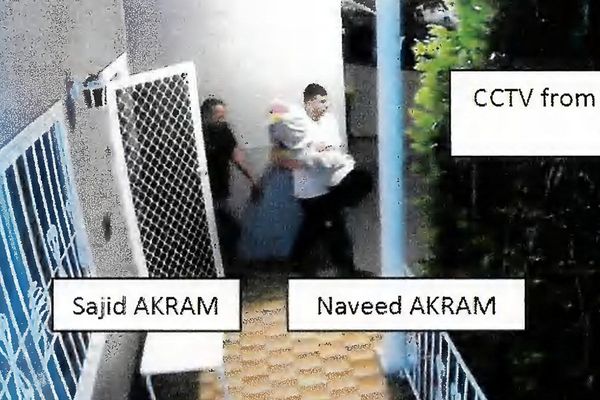
After a two-year hiatus, Thanyaporn Khongkrathok, 17, and her friends dusted off their kaleidoscopic bird-like costumes. When the curtain was raised, they danced gracefully to pay respect to their ancestors. Thanyaporn has practised nora, the southern performance art, from an early age because she wants to preserve it.
"When I was young, I learned nora tua on [body bending], but I am now picking up new choreography. I think nora should be adapted to become more exciting. Young performers aren't quite interested in traditional nora, even though it can provide the foundation for other performances," she told Life.
Thanyaporn is one of those who recently joined a two-day celebration at Wat Pha Kho in Songkhla, the first performance since the coronavirus pandemic began. The event was sponsored by the Media Centre for Arts and Culture, Thai PBS, after nora was awarded intangible cultural heritage status by Unesco last December.
The origin of nora remains unclear, but it has been practised in southern provinces for five centuries. It combines singing, dancing and storytelling. Its name is a shortened form of Manora, a half-human, half-bird princess in the tale of Suthon And Manora. It is generally performed in a ceremonial context and for entertainment.
What is the future of nora after it joins khon and traditional massage on the intangible cultural heritage list? While performers are adapting nora to ensure survival in local communities, experts said it should be more accessible and experimental if it wants to go on the global stage.



Making it anew
Before dusk, an ensemble began to play music on a makeshift rectangular stage. It was a prelude to the nora rong kru ceremony in which ancestral spirits possess living descendants. It is held to show gratitude, give offerings and perform rites, such as yiap sen (stepping on the mark), tat jug (cutting the topknot) and khrawp seut (initiation by crowning).
"Nora rong kru is like a training programme. Anybody who completes it can entertain an audience with flying colours because they can apply techniques to performances," said Pichet Nong-ngok, the head of the troupe, who specialises in rituals and magic. Performers who supervise this ceremony must have undergone the initiation rite of crowning.

Many troupes include elements of traditional nora in their shows.
"Nora is a ritual in which we communicate with ancestral spirits. Entertainment is just an addition," said Saitip Sanesilp, a famous nora performer who came from Phatthalung.
One of them, for example, performed an adaptation of ram thaeng khe (stabbing a crocodile) from the nora rong kru ritual. It is enacted from a legend to make merit for the wild animal to be reborn. However, it was Nora Khailiam, or Phoomipatt Anuwatthanawong, who stole the public's heart. His concert came with an impressive array of light and sound, attracting fans of all ages, especially mae yok (female followers).
"I perform nora for entertainment, but it requires substantial investment in the troupe, the stage, everything," he said in his new costume made of crystals, costing some six figures. He is a third-generation descendant of the troupe, which combines traditional nora with modern-style dance and jokes. His performances are so popular that he is dubbed the prince of nora.
Joining his show was Sitthinon Rotchanamethakun, 17, who was making his debut. He learned nora from Ekkachai Srivichai, the famous southern luk thung star.
"Nora is our folk performance art. I don't want it to disappear. I am going on stage for the first time. It is very contemporary and accessible to young people," he said.

Beyond the circle
With several Thai artists making a global splash, the government has touted a plan to promote the country's soft power amid criticism that it misunderstands what the cultural wave really is. For example, South Korea's transition from authoritarian rule to democracy in the late 1980s was key in the development of its popular culture abroad.
Asst Prof Thammanit Nikhomrat, national artist in nora and lecturer at Thaksin University's Faculty of Fine and Applied Arts, said community residents always practise the art form, but recognition from Unesco affirms their pride and commitment. He will continue to perform and pass it down to young generations.
"But when it comes to going global, we should make nora more accessible, for example by teaching outsiders unique poses and exciting songs, to create a good impression. After entertaining them, go deeper into its root, such as belief and ceremony," he said.
Prof Pornrat Damrhung, a member of the working group on the preparation of cultural heritage data, dismissed an impression that nora is not evolving. In fact, even folk performers are using keyboards and electric guitars because traditional performances may frighten an audience.
"Nora never stops, but it may have to expand channels," she said. "At the same time, it involves looking inwards. Can we connect it to younger generations and their identities? More heritage will be listed because our country is culturally rich, but how can nora become an example of preservation and experimentation?" she asked.
Anant Narkkong, lecturer at Silpakorn University's Faculty of Music, said going global is characterised by a sense of belonging. For example, teenagers are passionate about K-pop because they feel they are stakeholders without being forced. Nora is now at that critical juncture.
"Are we going to count on Unesco only or allow people to admire nora in itself? We can't change the history of nora into something international, but can make ordinary people identify with it. There must be ways to promote it outside this circle. Can local communities exist without rejecting global forces?" he said.
Anant, who received the Silpathorn Award in 2019, said new historical evidence such as articles and videos must be collected to pave the way for the future. Nora should go beyond theatres and schools. Museums can play an active role in managing and passing it down. Meanwhile, he stressed the need for "dialogue with future generations".
"They are entitled to interpreting and experimenting with nora. Besides performers, other stakeholders like politicians and educators should understand and support folk performances. Everybody can contribute to the new ecosystem of nora and other art forms such as nang talung [shadow puppetry]," he said.









